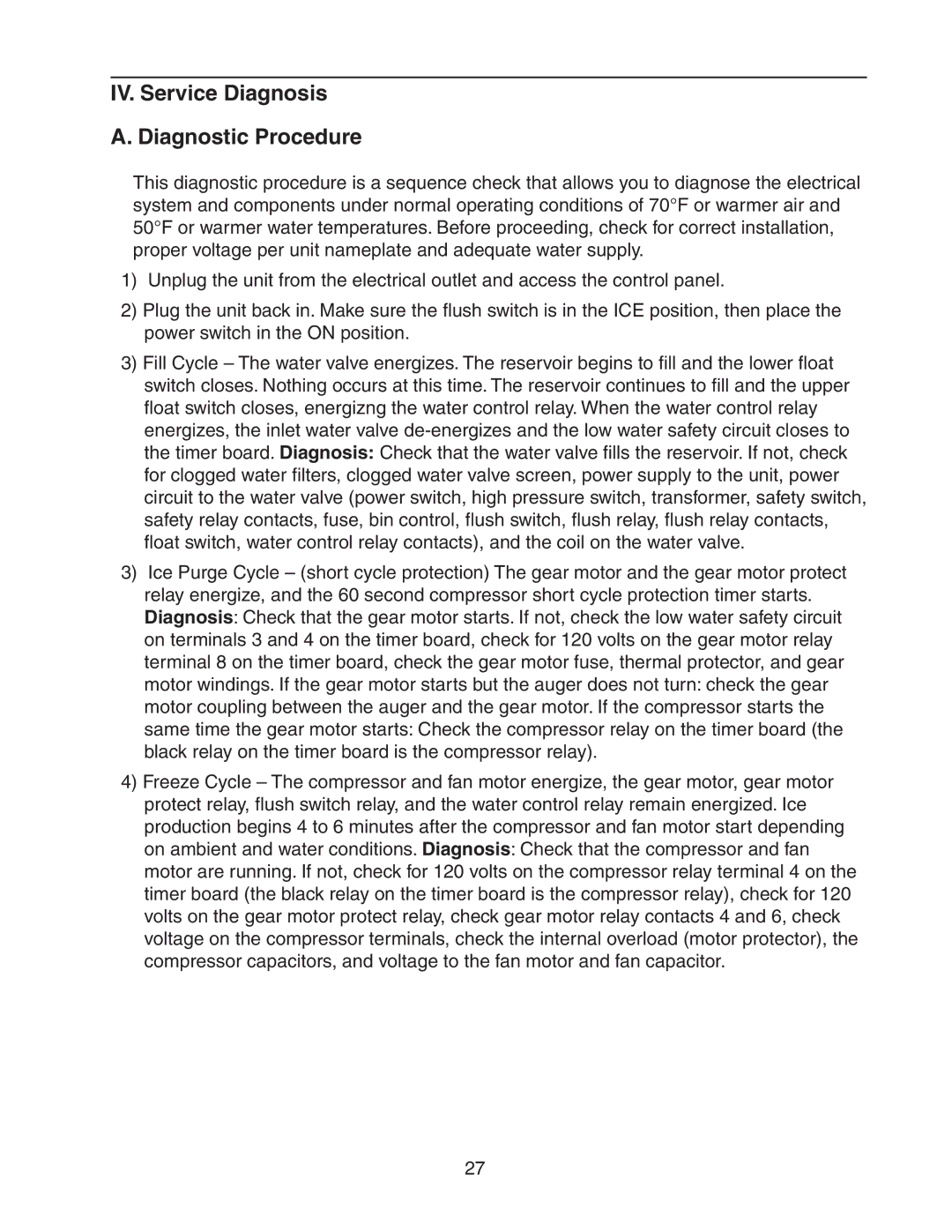IV. Service Diagnosis
A. Diagnostic Procedure
This diagnostic procedure is a sequence check that allows you to diagnose the electrical system and components under normal operating conditions of 70°F or warmer air and 50°F or warmer water temperatures. Before proceeding, check for correct installation, proper voltage per unit nameplate and adequate water supply.
1)Unplug the unit from the electrical outlet and access the control panel.
2)Plug the unit back in. Make sure the flush switch is in the ICE position, then place the power switch in the ON position.
3)Fill Cycle – The water valve energizes. The reservoir begins to fill and the lower float switch closes. Nothing occurs at this time. The reservoir continues to fill and the upper float switch closes, energizng the water control relay. When the water control relay energizes, the inlet water valve
3)Ice Purge Cycle – (short cycle protection) The gear motor and the gear motor protect relay energize, and the 60 second compressor short cycle protection timer starts. Diagnosis: Check that the gear motor starts. If not, check the low water safety circuit on terminals 3 and 4 on the timer board, check for 120 volts on the gear motor relay terminal 8 on the timer board, check the gear motor fuse, thermal protector, and gear motor windings. If the gear motor starts but the auger does not turn: check the gear motor coupling between the auger and the gear motor. If the compressor starts the same time the gear motor starts: Check the compressor relay on the timer board (the black relay on the timer board is the compressor relay).
4)Freeze Cycle – The compressor and fan motor energize, the gear motor, gear motor protect relay, flush switch relay, and the water control relay remain energized. Ice production begins 4 to 6 minutes after the compressor and fan motor start depending on ambient and water conditions. Diagnosis: Check that the compressor and fan motor are running. If not, check for 120 volts on the compressor relay terminal 4 on the timer board (the black relay on the timer board is the compressor relay), check for 120 volts on the gear motor protect relay, check gear motor relay contacts 4 and 6, check voltage on the compressor terminals, check the internal overload (motor protector), the compressor capacitors, and voltage to the fan motor and fan capacitor.
27
